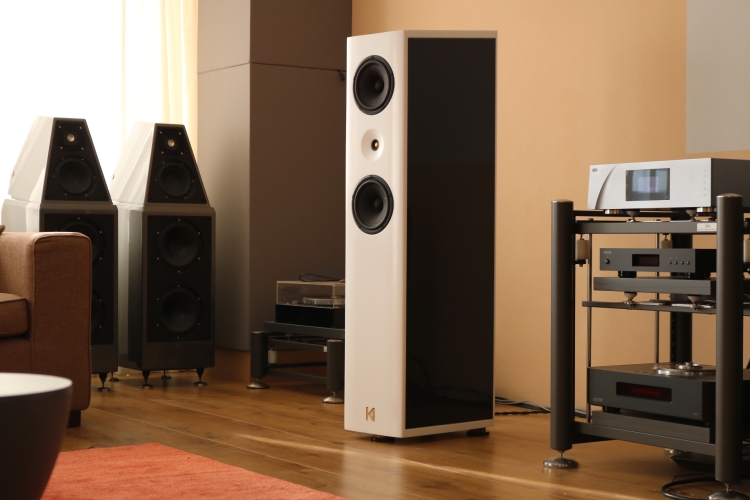
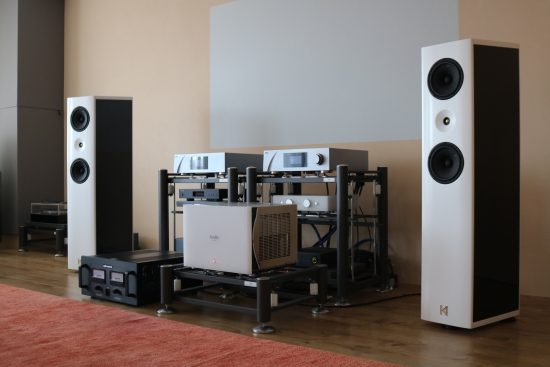
Listening – Zanden 8120
I was already prepped for the Zanden experience after having heard the Zanden/Kroma combination at the last Xfi audio show but in the context of my own listening environment, it can always be a little different. Although the Carmens have a nominal 8-ohm impedance and it would seem obvious to use the 8-ohm taps on the Zanden 8120 (as Ben also recommended), I felt compelled to experiment with this nonetheless. While the 4-ohm taps may work well for people who prefer a more relaxed and more romantic touch, I feel that those 8-ohm taps provide a more powerful, more transparent and more articulate delivery while still being superbly emotionally involving. The 8-ohm tap was clearly the technically correct option and also the one that I preferred.
So far, having listened with the CH Precision A1, I was already in awe with the Carmens’ performance but with the Zanden 8120, the Carmens stepped up the game even further. The CH Precision is extremely neutral (hey, it’s Swiss!) and also extremely fast and while it worked beautifully, technically perfect and with all the above-mentioned disbelief-suspending abilities, the Zanden 8120 managed to retain nearly all of the A1’s the technical excellence, while adding an even more emotionally engaging aspect, more so than probably any transistor amp can provide. It does this not with coloration or added thickness but by better fleshing out the sounds and projecting them more freely in a soundstage that is not only more room-filling but also better layered and more 3D and therefore, more involving. While it made the Carmens sound a little fuller and sweeter, and a tiny bit darker, the delivery was just as speedy, dynamic, and lively as the A1, and very articulate.
Revealing yet forgiving
The Carmens are very efficient which means that they can be partnered with a wide array of amplifiers, the proof of which can be read further below. They don’t necessarily need a high amount of watts but they certainly do reveal the quality of the amplification as well as the recordings. The beauty is that although they are revealing they also have a forgiving nature that makes good recordings sound amazing and lesser recordings sound, well, less amazing, but never unlistenable. That’s a very important point: they always make music in an entertaining fashion, even with mediocre recordings. The spirit of the music always shines through.
I no longer use an analog preamp because the super-refined C1 doesn’t need this and also because I want to hear precisely what the components and speakers are doing. I did carry out extensive experiments using Zanden 3100 and Audio Research Ref5 preamps and a detailed report of this can be read in the Zanden review. Suffice to say that the Carmens perform absolutely splendidly either with or without a preamp in the chain. Especially with a tubed preamp they sound even more organic, with even more richly saturated textures while still sounding more dynamic than any other speakers I used, without a preamp, they sound most articulate and direct, most vibrant and most lifelike.
With the Carmens, it proved very difficult to keep my critical mind switched on. All I wanted was to listen to more music and the same happened with anyone who came to visit. Reluctantly shaking off the urge to simply revel in the music, I re-enabled the critical reviewer mode and connected some more amplifiers.
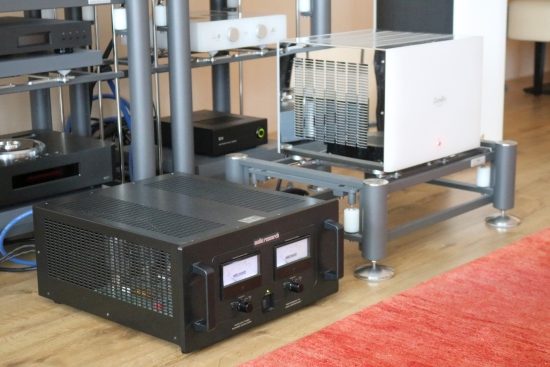
Audio Research Ref75 SE
The Ref75 SE is a long-standing favorite of mine. This amp sounds remarkably transparent and refined and very finely detailed and it can challenge my CH Precision A1 on these aspects. This amp’s Achilles heel is its bass, which can lack power, propulsion, and body depending on the speakers. With the Carmens, it actually has the best bass I heard from it so far and its free-flowing, yet pure, intimate and direct-coupled presentation works really well with the Carmens. In terms of timbre, resolution, and refinement the ARC performs similarly well as the Zanden and depending on the music played, the preference could be swung either way. The Zanden is considerably more sonorous and solid in the bass and it has more power, too. Perhaps partly because of this, rhythm, percussion instruments, and piano sounded best with this amp, while certain soulful arrangements could sound purer, more informative and more emotional, with the ARC.
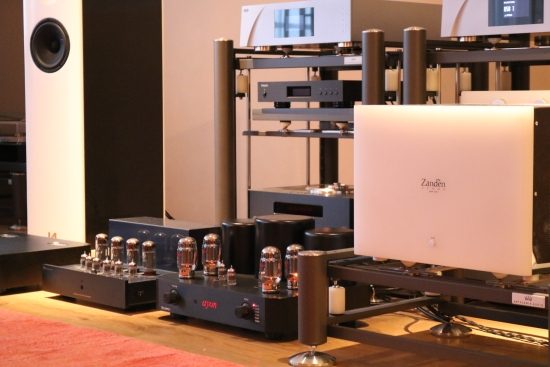
PrimaLuna DiaLogue Premium
The PrimaLuna has a very modest power rating (only 20 watts in triode mode) but has a very solid power supply and beefy output transformers which in practice means that it never had any issues driving large speakers and the Carmens are no exception. With this amp, they sound bold and powerful, well-timed and with bass solidity and fullness approaching the Zanden in that aspect (not in others!), with strong dynamics and natural, convincing timbre. Sonority and power remain this amp’s strongest assets and it drives the Carmens with authority indeed but in this exalted company, the PrimaLuna lags behind in all other aspects, mainly resolution, refinement, and soundstage layering. It is just a bit too rough, painting with very broad strokes. Probably no-one will ever pair these speakers with a 3000 euro, 20-watt amp, but at least we now know that you could.
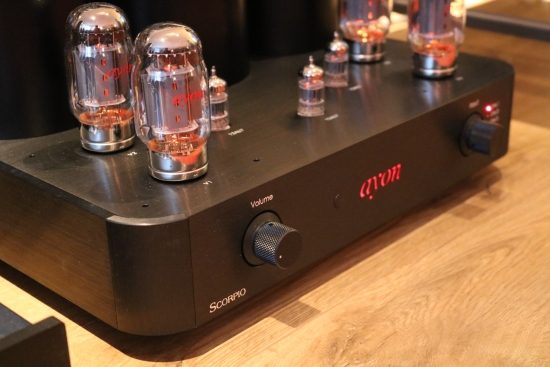
Ayon Scorpio
The Ayon Scorpio is also on a visit for review, really only supplied, because the higher model up, the Spirit III, was not available on short notice. The Scorpio’s retail price is 3.895 euro, still small change relatively speaking. Not suspecting much I connected it and… I was amazed! This amp sounds just as solid, sonorous, upbeat and dynamic as the PrimaLuna but much more transparent and much more refined. Also, it is faster and more articulate and has a natural, lifelike timbre to die for. It does all this and adds to it a purity and directness that reminded me of the Ayon Crossfire III SET-amp that I had on loan a while ago.
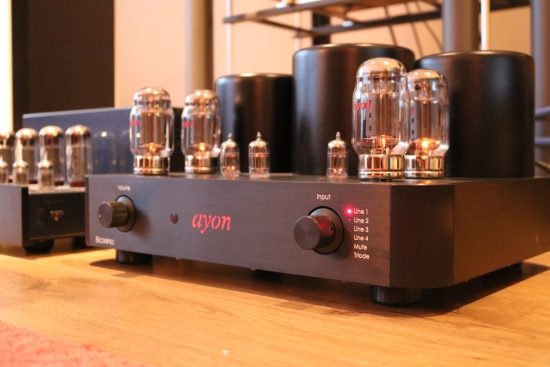
The Ayon’s presentation is not too far removed from the Audio Research Ref75 SE and although that amp is more refined, more fluid and airier, it lags behind the Ayon in terms of bass control and overall dynamics and slam, which, for me is very important. Some people may well find the Ayon a little bit too direct and they may prefer a warmer, gentler or smoother presentation but for me, it provided a very lifelike experience.
This made for a highly communicative presentation that I find quite attractive, even if the Zanden is more organic, smoother, more richly textured and overall more luxurious and liquid. It would be interesting to see what the models higher up in the Ayon range can accomplish but what the Scorpio achieves at its modest cost is truly commendable. The Carmens, in turn, have impressed me even more deeply.
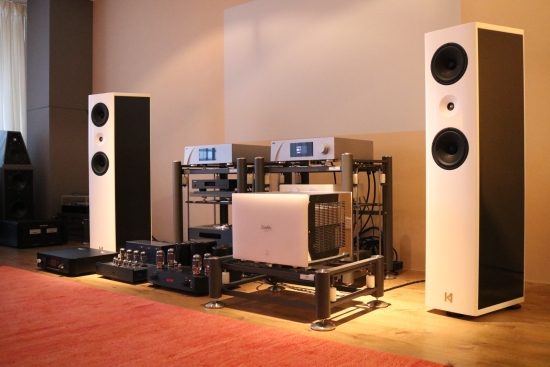
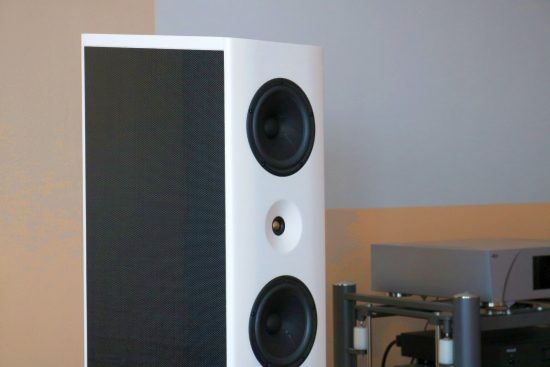
December 2019 update – Running In
The Carmens have turned out to need much more running in than I anticipated. In the first weeks, they could sometimes sound very lively and dynamic and other times they could sound overly warm and shut-in. My demo samples were supposed to already have been fully on-song but as I learned now (5 months later), much more time was needed. Looking back, I think the turning point was around 3-4 months of normal use.
Conclusion
The Kroma Audio Carmens excel with acoustic instruments, percussion, and vocals but they sound equally impressive with Christina Aguilera and Lady Gaga. Azymuth’s samba doido (jazz-samba-fusion) sounds absolutely infectious and even gritty Dub-techno is delivered precisely as it should. They always turn in a dynamic, vibrant, and lifelike performance and they never get confused, no matter the complexity or the amount of subterranean bass present in the recording. Their bass is not only fast, well-timed, and utterly coherent, it is also supremely linear from the lowest to the highest notes, plumbing to subwoofer-like depths and remaining ruler-like linear right up into their upper treble.
While I found the Carmens to match particularly well with the Zanden 8210 power amp, they work superbly well with high-quality transistor amps as well. They are great all-around but truly excel in the fields of linearity, coherence, organic textures and natural timbre. These qualities stand out not only with the slightly smooth Zanden but also with the very neutral CH Precision A1, the open and airy Audio Research Ref75 SE, the pure and direct-coupled Ayon Scorpio and even the very affordable PrimaLuna DiaLogue Premium. All of these amps drive the Carmens perfectly, while ticking more or fewer audiophile boxes but always producing pure, vibrant, and involving music. It seems that they work well with pretty much any amplifier.
Don’t take only my word for it – each and every person who visited to hear these speakers commented on how utterly realistic and totally engaging they sound. Several of my audio friends vowed that this is the absolute best sound they heard, period – either in my room or elsewhere, adding that they would gladly trade their systems for this, myself included. Even audio buddy JW, a die-hard ribbon fanatic, agrees that the Kroma Audio Carmens are exemplary. They are technically superb and highly revealing. They tick each and every one of the audiophile boxes but more importantly, they never fail to make soul-stirring music in its purest form. Yes, they cost an arm and a leg. But if you can afford them, these may be the last speakers you need.
Read Also
External Links
Available from: Chattelin Audio Systems
Distributor for the Netherlands: Harmony Audio Import
Manufacturer: Kroma Audio
Krion website: Krion
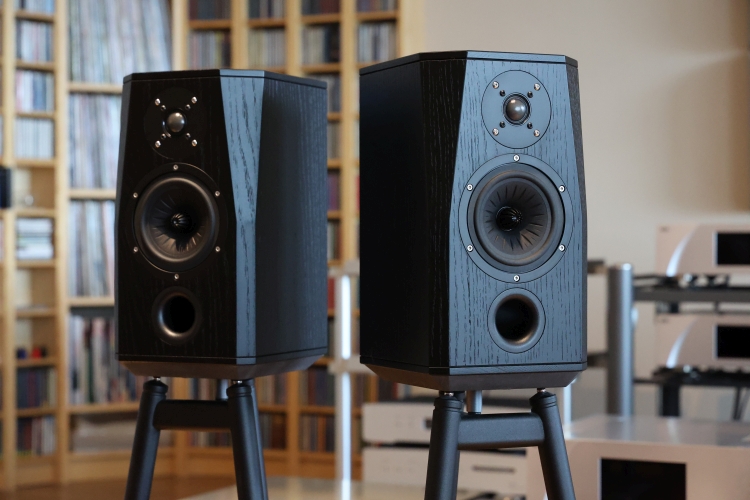
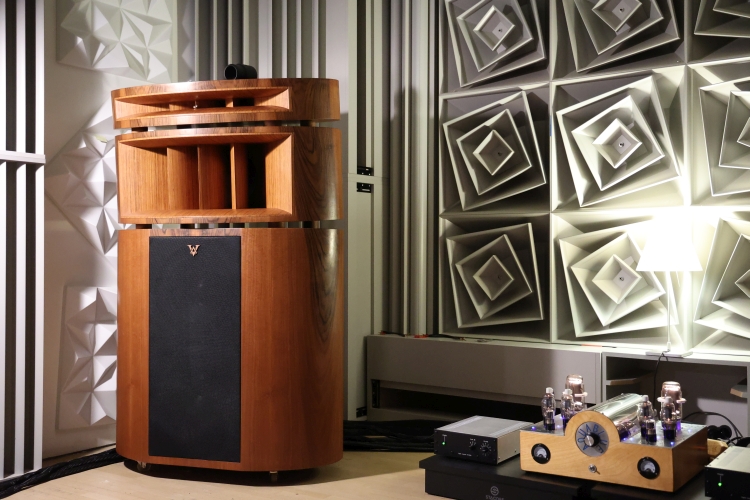
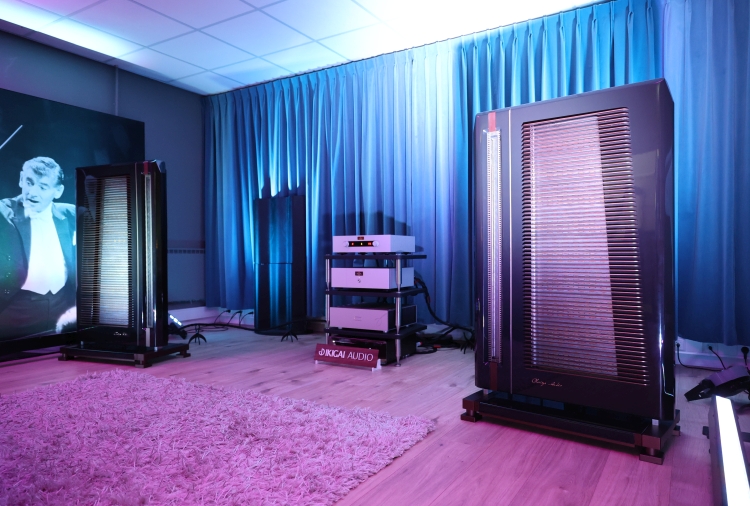
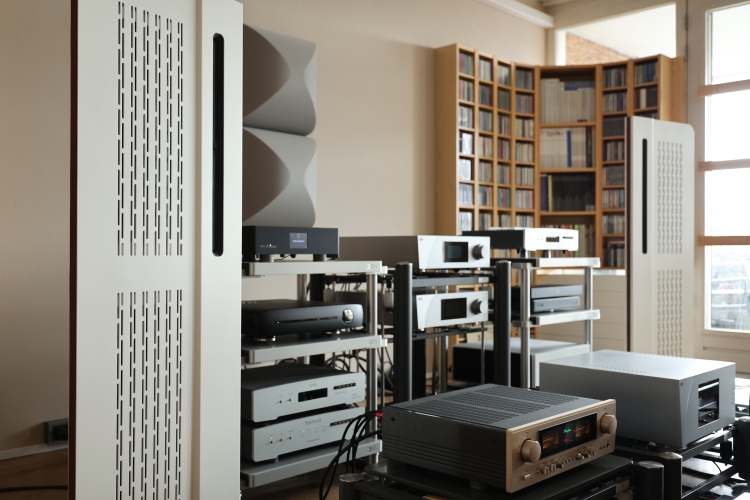
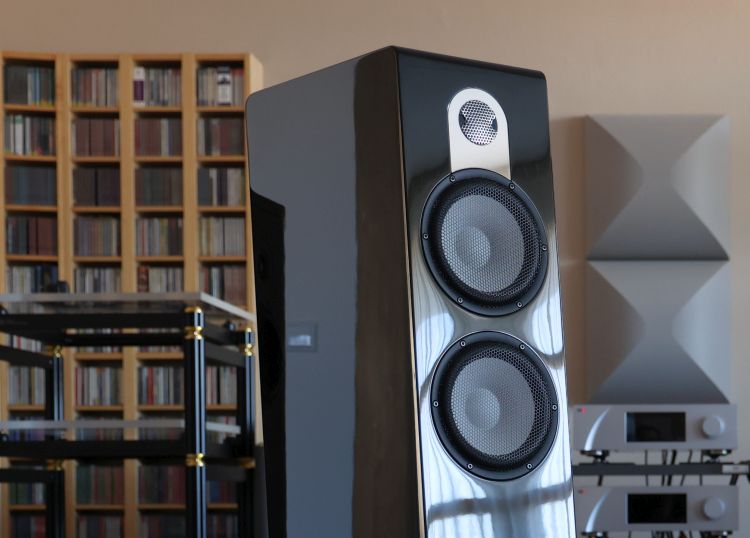
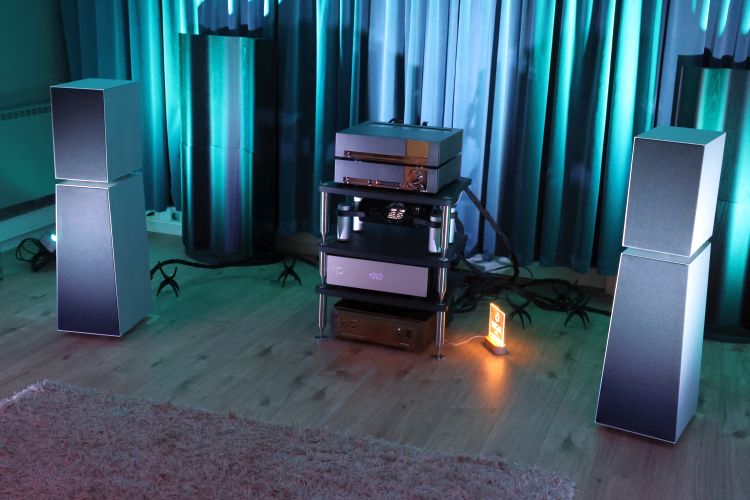
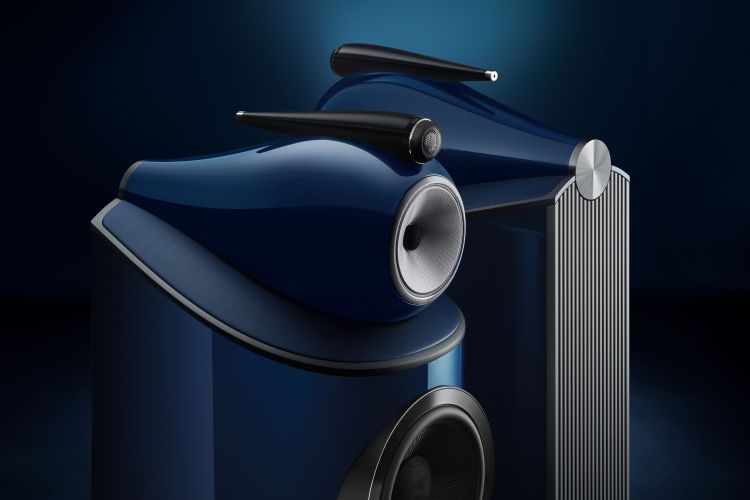
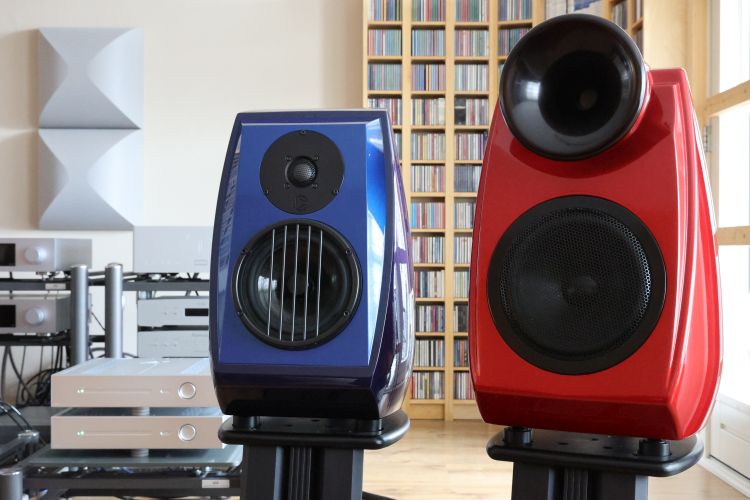
Christian: An interesting, if rather confusing, ‘review’.
At first the White speakers are life-like, dynamic, etc., and then after a few weeks (compared to the Wilson’s), the speakers sound “darker” ?
If I read correctly, the reviewed loudspeakers are near L$60,000 BPD ($75K USD/$100K CAD) ?
And they happen to be life-like/amazing -but ‘dark’ sounding in comparison to Wilson’s used for comparison. What is the price of the Wilson’s ?
Are the White speakers 2-way, 3-way; driver compliment, cross-over topology and X-over points?
What exactly is the material the enclosure is constructed ?
Rest assured, at the price-point stated (if read correctly), a loudspeaker MUST be (should be expected to be) the BEST -no excuses, nor comparatively “dark” sounding.
If a $14L/pair loudspeaker can manage superb, accurate, beguiling SQ (KEF Reference 3); sounding fast, alive, dynamic, nuanced -in a word amazing, anything beyond that rice point must at least be it’s equal -to justify the (enormous, additional) outlay.
That neither you nor the company forked-over boat-loads of product/company details, I say good-luck to the designer’s wishing to compete with the likes of Focal, B&W, Magico, YG Acoustics, and similar all with a well documented history -and very informative product details.
Both you (as a reviewer0 and the White speaker company (manufacturer) can do better. In fact, much better. It’s both expected, and warranted.
peter jasz
Hi Peter Jasz, I see your point and I will go over the review to see if I can clear up some things. For now, I should add that the Kroma Audio Carmens have turned out to need much more running in to become stable. My samples were supposed to already have been fully on-song but as I learned now (5 months later), more time was needed. This explains why they could sound overly warm or shut-in some days and nicely open and communicative on other days. Judged now that they have stabilized (which happened after around 3 months), and having compared them to many more other speakers, I can confirm that the Wilson WP8 are more forward in the upper midrange and their treble is actually tilted up a little, rather than the Kroma’s being dark. The Kroma’s do sound harmonically richer than the Wilsons and tend to be less revealing of the source. The Wilsons sound more direct but are also more uneven and hard and even edgy at times. Their treble units tend to emphasize leading edges which can sometimes work out well, enhancing the perceived level of detail or openness but other times this can be overbearing. I would say that the Wilsons have more of a technical approach and the Kroma Carmens are more of a music lover’s product. Their HF driver never misbehaves yet they have similar resolution as the Wilsons, maybe even better. They make it easy to relax and enjoy the music.
As for the specs I can only quote what the manufacturer supplied which is that the material is Krion and that the speaker is a two-way design. I tried to obtain more info but the language barrier made this impossibe. The designer only speaks Spanish. Anyway, Krion is a Spanish variant of Corian, both a sort of “artificial stone” and it is the cost of the manufacture and assembly of this material that makes the speakers cost so much. There is a site especially for the Krion material: Krion.com. Here, the following can be read: “Krion is a material that is warm to the touch and similar to natural stone. It is made of two-thirds natural minerals (ATH – aluminium trihydrate) and a low percentage of high-resistance resins”. Lastly, I can add that the Kroma Carmen has been measured by the Dutch distributor and is said to have a very flat frequency curve to beyond 20kHz but that, as always, the perception can deviate from what the measurements suggest.
The Wilson WP8 was around 35.000 euro in 2008 and the current incarnation of this model, the Sascha DAW, is 50.000 euro, so they are pretty much in the same ballpark. Should one expect a “PERFECT” product at this price level? Sure! But if you ask me, the perfect speaker does not exist, not even at even higher price levels. Every speaker’s performance is, to some extent, a compromise, a result of decisions made by the designers. More importantly, the interactions with the room in which they are placed play a very large role in their success, and even if they happen to integrate perfectly, personal preferences will still dictate what’s “best”. In the end, all I can do is to relay what I hear in relation to other speakers and with hindsight of the experience that I gained so far. It’s up to the reader or prospective buyer to decide which works best for them.
EDIT – the review has now been edited to read more linearly and logically while retaining my conclusions.
I’ll go for the new ferrite full range Audio Nirvana 15inchers, and make their largest cabinets out of spruce ply. Cost Less than 1KUS$!! Betcha it’ll beat the Kroma.. as the AN reviews say. No.. I’m not their agent just ready for another speaker set, already having the AudioN 8inch Neodinium in Oris Horns.. with Kinergetic subs. Mmagic at 2G$!!
Dear Christiaan,
A real interesting review and a am very curious to here the products of this brand. The described natural, lifelike, realistic and engaging sound is my absolute preference.
I have a complete classic Zanden system and looking for a matching speaker. Matching and often combined speakers are Kroma, Kaiser Kawero, Magico, even the newer Wilson like the mentioned Sasha DAW.
Do you have direct comparisons with these speakers to Kroma? Maybe a newer Wilson Sasha DAW would have ended in another result in direct comparison.
Any informations on this?
Thanks a lot and best regards,
Balazs
Hi Balazs, Classic Zanden can be quite smooth-sounding unless they are mated with very open and efficient speakers. Although all Zanden amplifiers will power Kromas very easily, combining smoothness with a rich and colorful sounding speaker can lead to a sound that is too creamy for some tastes. However, obviously, that’s a personal matter. If it’s the flow and breathing in the music that matters most then you can’t beat tubes and indeed not Zanden. For me, however, the Kromas sounded best when combined with fast and open sounding amplifiers such as CH Precision and the Audio Research Ref75SE.
The Wilson WP8 that I had when I got the Kromas have been described in the review and I still stand by that. Current Wilsons such as the Sasha DAW sound smoother and no longer have that ultra-crisp, sometimes piercing treble. To some extent, they have become a little bit more mellow and less shouty. On the other hand, they remain Wilsons. First and foremost, they are very dynamic and propulsive, sometimes at the expense of nuance or linearity. Second, they still have a tendency to sound boomy unless you have a very large and ideal room. Most notably, even the DAW doesn’t sound like a Kroma in terms of saturation and organic midrange. In a nutshell, they remain different species. For a report on the DAW, see my Reference Sounds review.
Magicos are even further removed from Kroma, unless you go to the larger models of the M2 range, you can’t really compare them. The Q series, are honest and neutral to the point that many can’t listen to them. They will make it painfully clear when a recording isn’t great. The S series corrected that with a sweeter and less dry balance while retaining much of the neutrality and transparency, but still, they are nothing like Kromas or Wilsons. Kroma = Emotional seduction, Wilson = Thrillride excitement, and Magico is all about neutrality, slightly sweetened with later models and, interestingly, downright rich and full-bodied with the biggest M2 models. But most importantly, I wouldn’t advise to use tubes with Magicos, not even the S1 mkII, it just makes them sound dull.
I hope you tried those tubes with the magico. Neutral and tubes can be sometimes magical
I sure did, but so far, I have not found the ideal match using tubes with the S1s. I should add that the S1’s are relatively sweet and smooth and not cool, like some of the Q series models. With the S1s, so far, I personally prefer the tight bass and articulation over the typical benefits of tube amplification.
That said, I have a friend who drives the very difficult and rather clean Magico Q5’s with Jadis JA200 monos, so it is indeed possible:-)
Dear Christiaan, It has been a long time since I visited your website and found this review of Kroma that I found interesting because you are the second audiophile I know who has strongly recommended them for their melomanic character. As I told you in the past, I am also a user of the rebuilt Duetta Signature and although I still keep and listen to them, I was “caught” by another type of sound presentation to alternate with DeVORE Nines. Obviously by price they are from another league but the similarity of our perceptions in both has caught my attention. I send you an affectionate greeting and I thank you once again for the pleasant readings you have given me.
G.
Awesome read. I agree that since these things were sent to you and not many are familiar, the scientific hat should have been positioned in the writeup. Beyond that, you were spot on. .magico entered speaker building via the medium of ( perfection at whatever it costs). There was zero pedigree and heritage to it’s path. It is a scientific speaker company. Wilson also is a scientific company, but Wilson other than the fact that they both launched on a revolutionary-moment in turning monitors Into fullrange possibilities, somewhat more evolved into a scientific company. And so your analogy is entirely logical, in how you describe their musical palette. I get you. I got you when you said these Spaniards greatest passion was tuning by ear. That’s their signature/imprint on the music. Their speaker has no choice but to sound more organic and wholesome than de other two. I most certainly would not mix tubes with speakers voiced that way. You need to light some solid state grunt, high capacitance design in order to achieve nirvana. Having said all of that…I’ve heard Magico on some high powered tube amps and the magic was real. What I would love to hear is a shootout based on synergy. Because it is synergy that matters in audio.
Hi,
Maybe some of you have heard Kroma with the Zanden tube amps (model 9600 MkII with 845 in push pull) or even with complete Zanden classic system? Unfortunately I have never heared Kroma, and I know the Sasha DAW just with other amps like Gryphon, etc.
I would be very interested to hear Kroma in comparison to Sasha DAW with a Zanden system.
Can you, even if not heard, imagine, how it could match and sound?
Sorry, now I read that we have discussed the Zanden/Kroma/Wilson already 2 years ago further above, sorry to ask again. Your answer, Christiaan, further above, is very informative, thanks a lot again!
No probs, Balazs!
Wow, these speakers review like the Acora Acoustics (granite) SC2 that I heard with various pre-amps and amps. Something about the stone frame, simpler crossover and more basic two way system for coherence makes this Kroma speaker probably worth it. I opted for a Von Schweikert VR9 SE Mk2 from 2018 with upgraded sub amps, wiring and all new ribbon tweeters for a similar price. But I really liked the Acoras which had no sound of their own and no faults to speak of. The Kroma reviews the same. Great! (I especially dislike the large and older Wilson’s because they were overly “overt” or resolving over musicality-drives me from the room after 15 to 20 minutes).